Washington D.C., the magnificent capital of the United States, is renowned not only for its splendid architecture and heroic historical monuments but also as a vibrant living museum of street art. Colorful murals, hidden in every neighborhood and alley, not only embellish the city’s beauty but also tell contemporary mythological stories, reflecting the soul and identity of Washington’s “native people” – its diverse residents and creative community. Join “Travel the World” to explore these unique artworks, and feel the cultural pulse and spirit of Washington through the lens of mythological stories on the city walls.
Adams Morgan: Where Urban Legends Begin
Adams Morgan, a lively and multicultural neighborhood, is considered an outdoor museum with countless impressive murals. Among them, “Madam’s Organ” is a must-see, a bold and controversial work that presides beside the famous Madam’s Organ Blues bar. This mural, completed in 1997 under the sponsorship of bar owner Bill Duggan, has become a symbol of the neighborhood, part of the Adams Morgan “mythology,” where freedom and liberality are celebrated.

Nearby, at BUL Korean Bar & Restaurant, another mural tells a different mythological story, rich in art and history. The mural at BUL, painted in 1980, recreates one of Toulouse-Lautrec’s most famous posters of the singer Aristide Bruant. Interestingly, this work was painted based on a photograph of André Neveux, the original owner of the restaurant, creating a unique connection between European art and local culture, a “mythology” of cultural intersection in Adams Morgan.
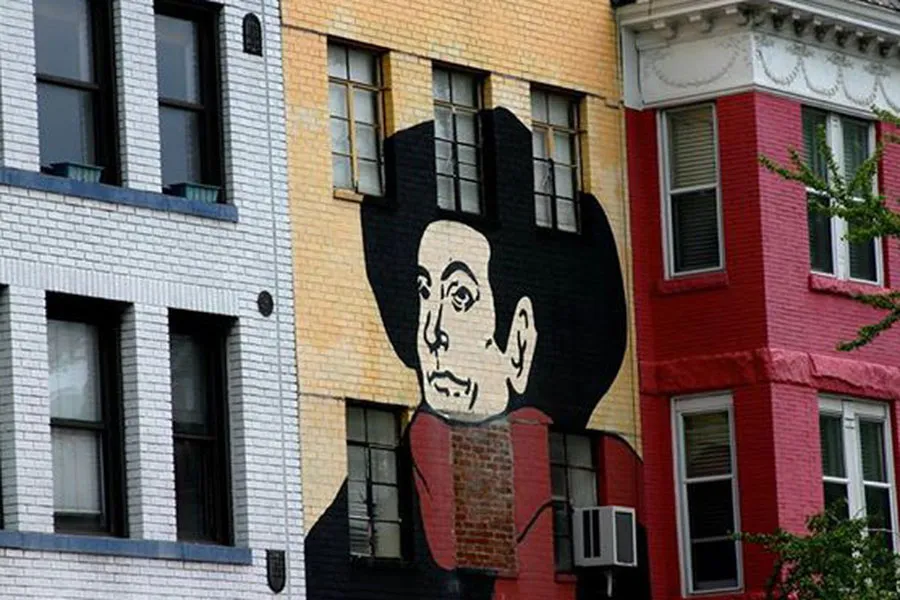
Continuing our exploration, we come to “Un Pueblo Sin Murales” on Adams Mill Road. The powerful title of this mural, “A people without murals is a demuralized people,” speaks to the importance of public art in shaping community identity and spirit. Created in 1977 by Latino immigrant artists Felipe Martinez, Carlos Salozar, Carlos Arrien, and Juan Pineda, this is the only mural in the neighborhood made by the Latino community, a “mythology” of diversity and integration in Adams Morgan. The mural has been revived many times, demonstrating its enduring vitality and profound cultural significance in the hearts of Washingtonians.
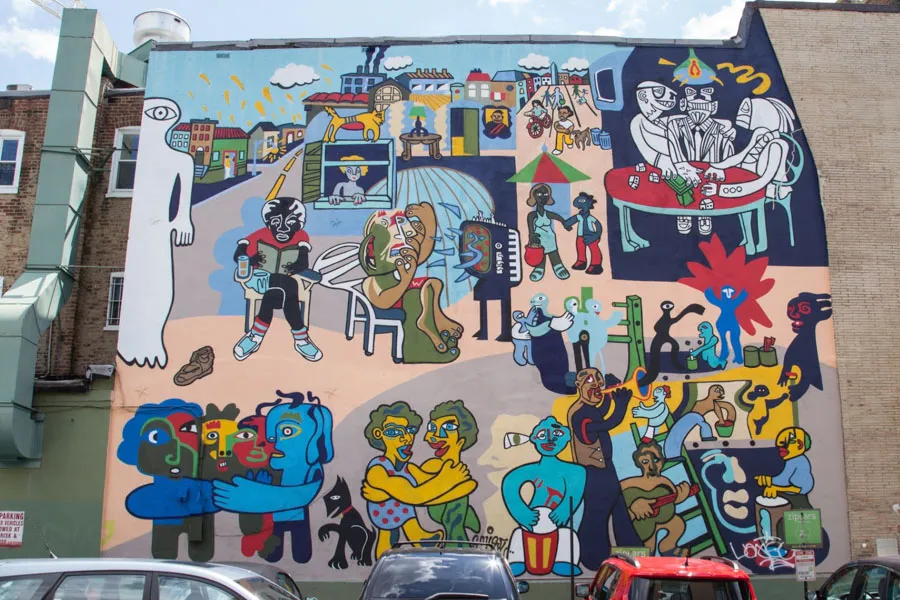
Bloomingdale: Modern Myths and Bright Colors
Bloomingdale, an emerging neighborhood with peaceful beauty, offers modern mythological stories, expressed through the lens of contemporary art. The “Neptune” mural is a prime example. This vibrant and colorful work, located in an alley near Bacio Pizzeria, was created by artists Jeff Huntington and Juan Pineda during the ART ALL NIGHT DC 2019 event. “Neptune” is not just a work of art, but also a new mythological story, part of the Bloomingdale “mythology,” where art and life intertwine, creating unexpected and exciting experiences.
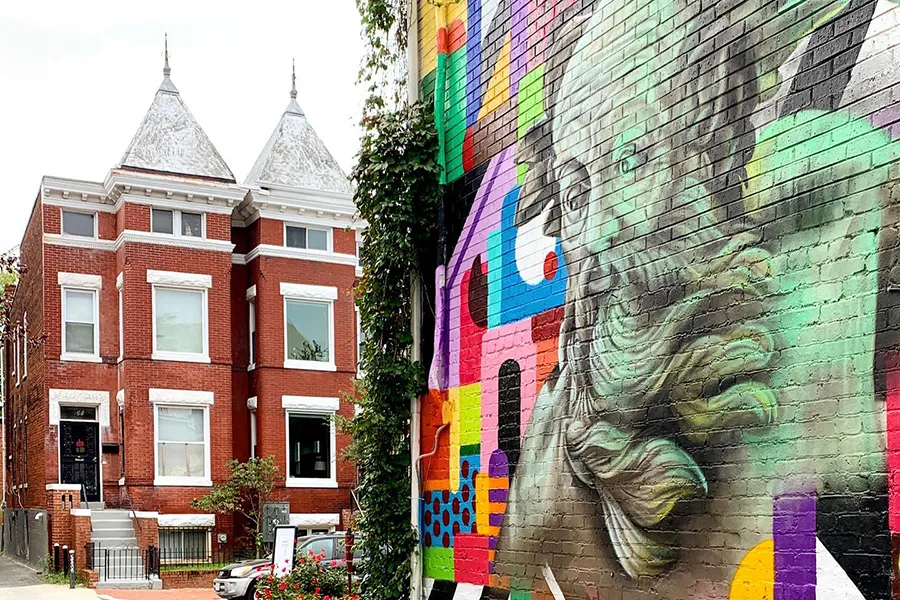
Columbia Heights: Honoring Cultural Myths and Diversity
Columbia Heights proudly stands as a neighborhood filled with street art, honoring the culture and diversity of the area. The mural “My Culture, Mi Gente” by artist Joel Bergner is a clear testament to this. This colorful artwork, located opposite the Columbia Heights Metro Station, is part of the Columbia Heights “mythology,” a story of cultural pride, community solidarity, and respect for diversity. The murals here are not just decorations, but also the voices of the community, telling their own “mythology.”
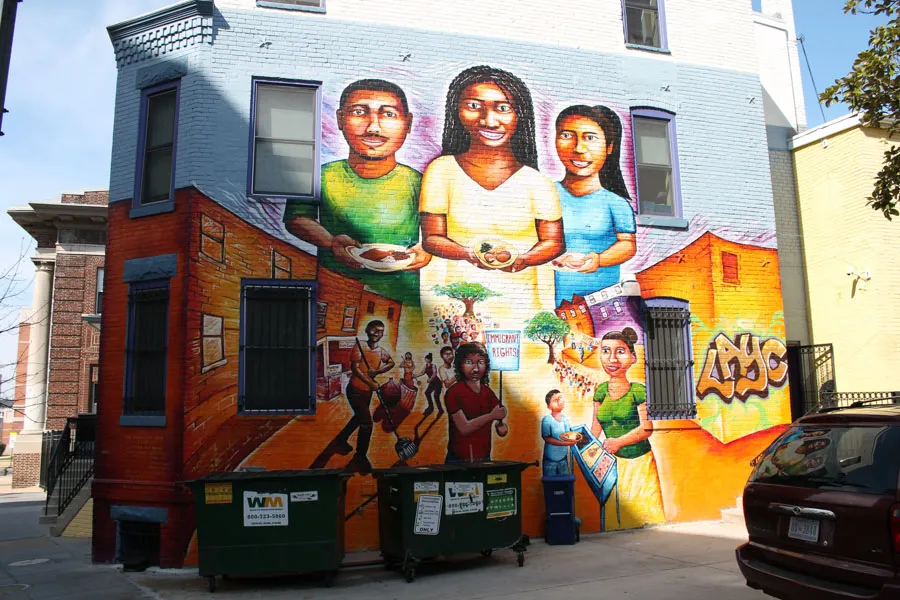
Dupont Circle: Myths of Hope and Light
Dupont Circle, a famous historical and cultural area, offers a mythological story of hope and light, expressed through the Amanda Gorman mural. This radiant work depicts the memorable moment during the 2021 US presidential inauguration when Amanda Gorman, the young poet, recited her inspiring poem “The Hill We Climb.” The mural, painted by local artist Kaliq Crosby, is not just a portrait, but also a symbol of the Dupont Circle “mythology,” a story of resilience, hope, and the power of words. The quote from Gorman’s famous poem, “There is always light, if only we’re brave enough to see it. If only we’re brave enough to be it,” further deepens this mythological message.
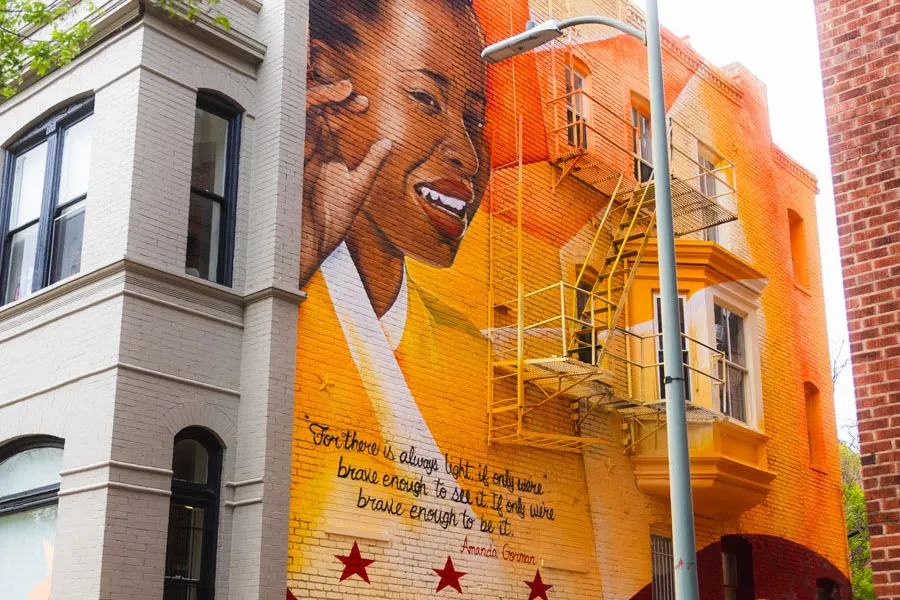
Georgetown: Classic Myths and Local Identity
Georgetown, a historic and luxurious neighborhood, tells mythological stories that are both classic and deeply rooted in local identity. The “Wave” mural is a prime example. This iconic work, recreating the 19th-century Japanese print “The Great Wave off Kanagawa” by Hokusai, was created in 1974 by artist and architect John McConnell. The “Wave” mural is not only a beautiful artwork, but also part of the Georgetown “mythology,” a combination of classic beauty and modern creativity.
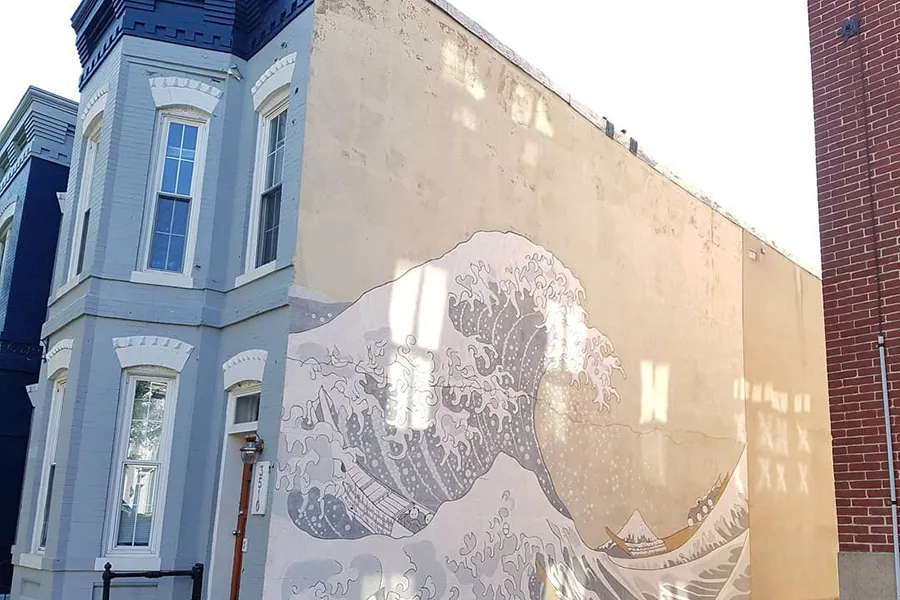
More recently, Georgetown welcomed the “Alma bản địa” mural by artist Victor Quinonez. This work, inspired by the photography of Diego Huerta and Jalisco, Mexico culture, brings a mythological story of origins and identity. Images of the Wixárika Elder Tree, blue corn, and guajillo peppers are not just decorative elements, but also profound cultural symbols, telling the “mythology” of Alma bản địa, a story of connection between Georgetown and other cultures around the world.
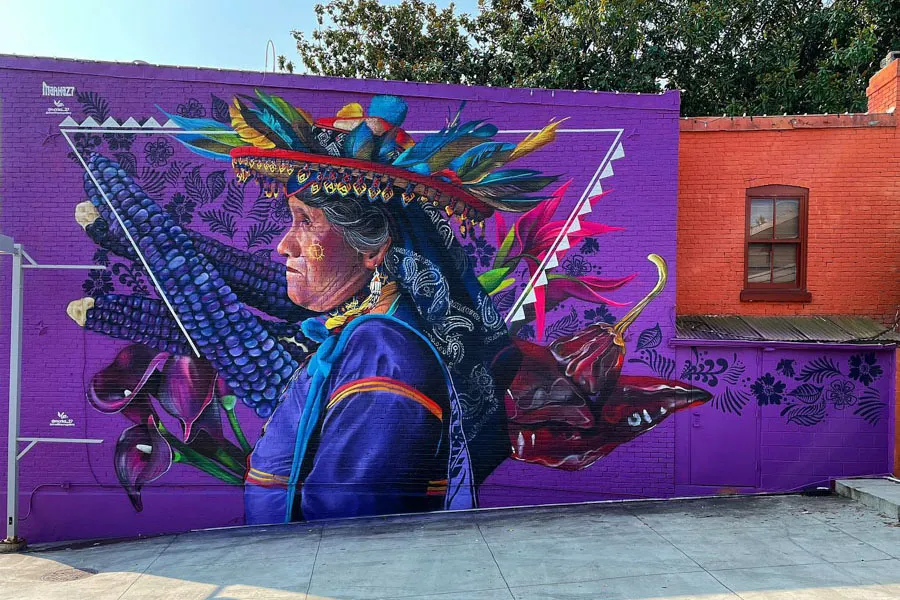
NoMa: Myths of History and Community
NoMa (North of Massachusetts Avenue), a rapidly developing area, tells mythological stories of history and community. The George Washington mural by artist MADSTEEZ is a prime example. This work, part of the international art movement POW! WOW!, presents a fun and unconventional image of George Washington, a contemporary reimagining of historical “mythology.”

At Union Market, a popular culinary and cultural destination in NoMa, we encounter mythological stories of community and recovery. The heart wall with the message “Never Give Up” is a “mythology” of perseverance and hope. The [R] Mural Project, designed to inspire the community during the COVID-19 pandemic, tells another “mythology,” about resilience and the strength of community in difficult times.
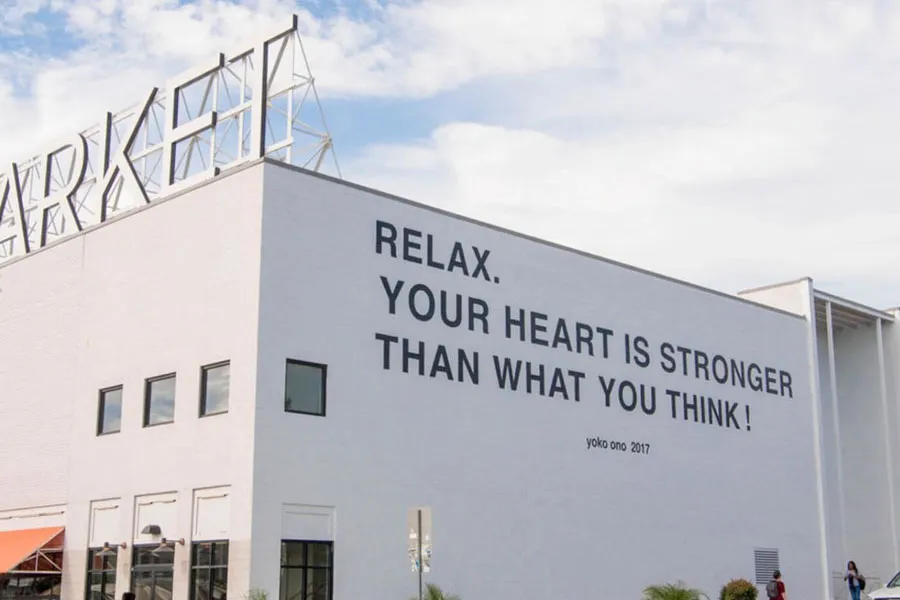
Nearby, the new mural by Meaghan Toohey, part of the 2021 DC Walls Festival, brings a mythological story of building and connection. The image of a woman building a brick staircase on a 900-foot-long wall along the Metropolitan Branch Trail is a “mythology” of effort, progress, and human potential to rise.
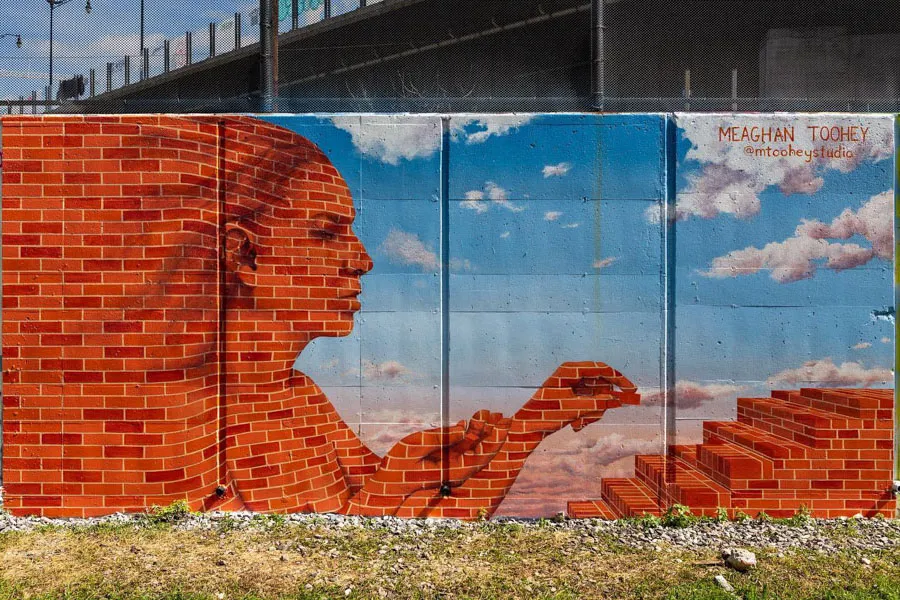
Mount Vernon Triangle: Myths of Music and Change
Mount Vernon Triangle, an area that blends antiquity and modernity, tells mythological stories of music and change. Blagden Alley, a unique art space, is home to many impressive murals. The “Let Go” mural by artist Rose Jaffe is a “mythology” of liberation and freedom. In addition, the memorial mural to musicians Sun Ra and Erykah Badu is a musical “mythology,” honoring the musical legends of Washington D.C.
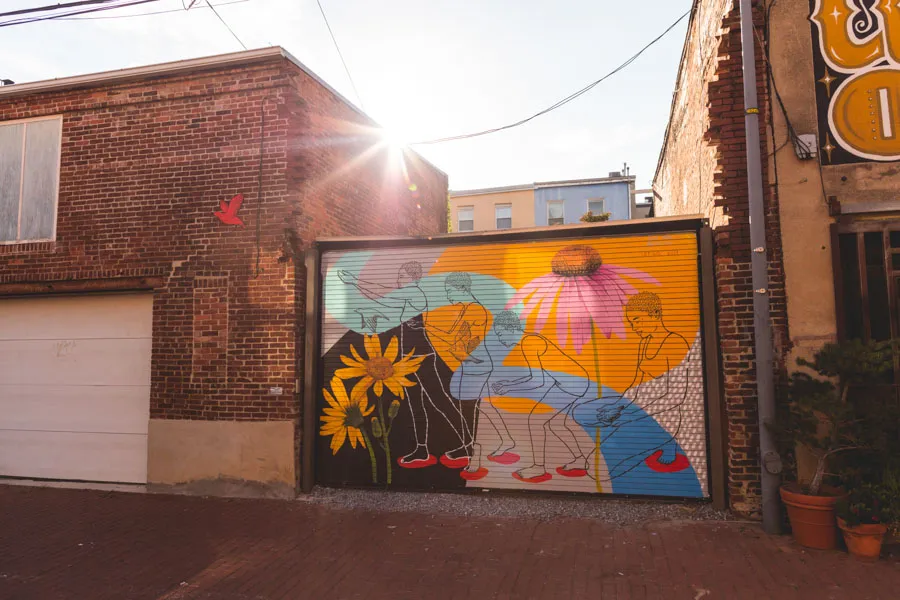
The “Carrot XXIV” mural in Blagden Alley brings a community mythological story. This work, created by artist Marcella Kriebel with the participation of the local community, is a “mythology” of collective creativity and the power of art to connect people.
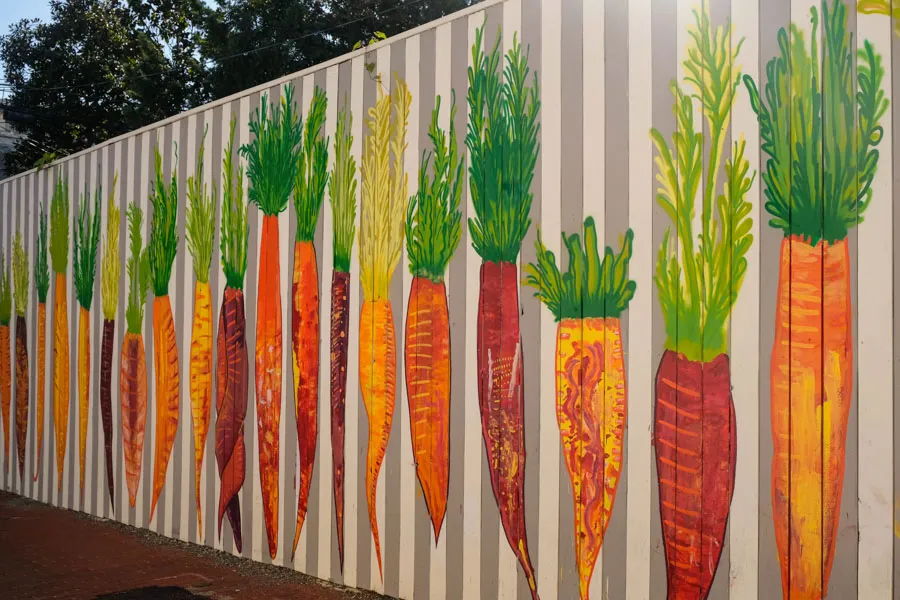
Nearby, the “Voices of Change” mural tells a mythological story of unity and hope. This work, featuring images of Black leaders such as Mayor Muriel Bowser, Vice President Kamala Harris, and Dr. Martin Luther King, Jr., is a “mythology” of peaceful and positive change, a call for unity and action for a better future.
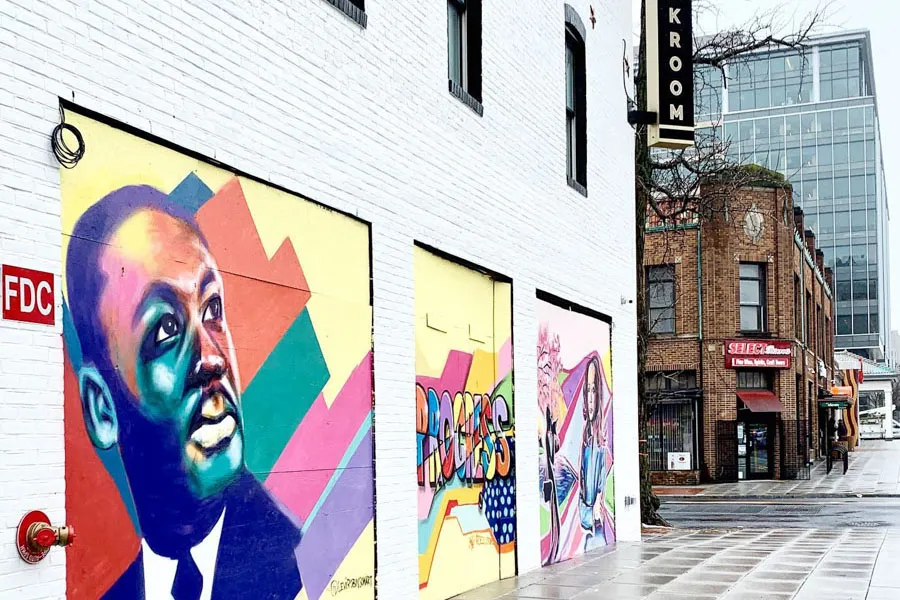
Shaw: Myths of Music and Icons
Shaw, a historic neighborhood with a rich cultural heritage, tells mythological stories of music and icons of Washington D.C. The Marvin Gaye mural by artist Aniekan Udofia is a musical “mythology,” honoring the music legend born in DC. This vibrant work is a symbol of Shaw, a neighborhood associated with soul music and African American culture.
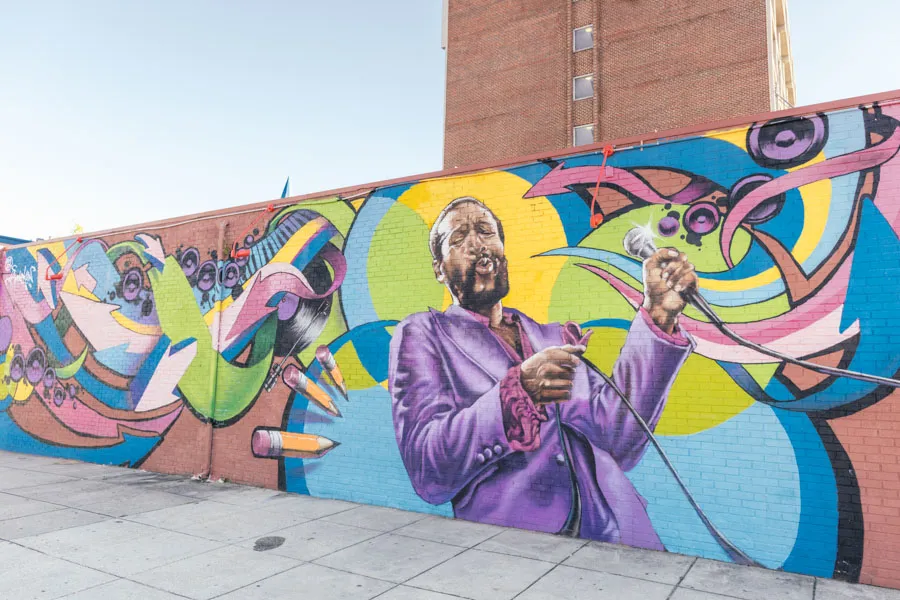
The “Watermelon House” in Logan Circle, near Shaw, is a unique urban “mythology.” The story of the pink house transformed into a watermelon has become a local legend, part of the Shaw “mythology,” where surprises and delights are always hidden in every corner.
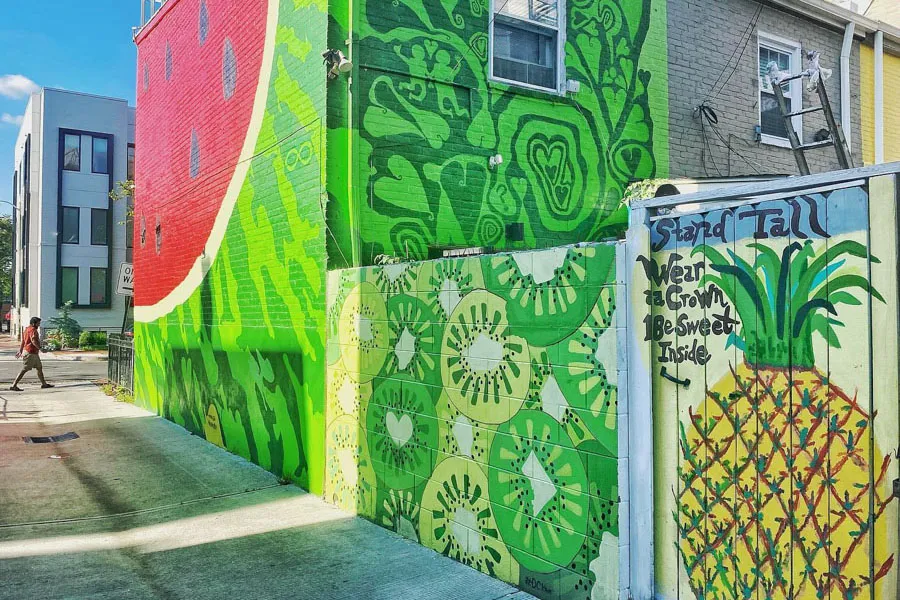
The “Washington” mural by No Kings Collective brings an iconic “mythology,” combining images of the Washington Monument, the DC flag, and Stella Artois hops. This work is a symbol of Shaw, a combination of history, local culture, and creative spirit.
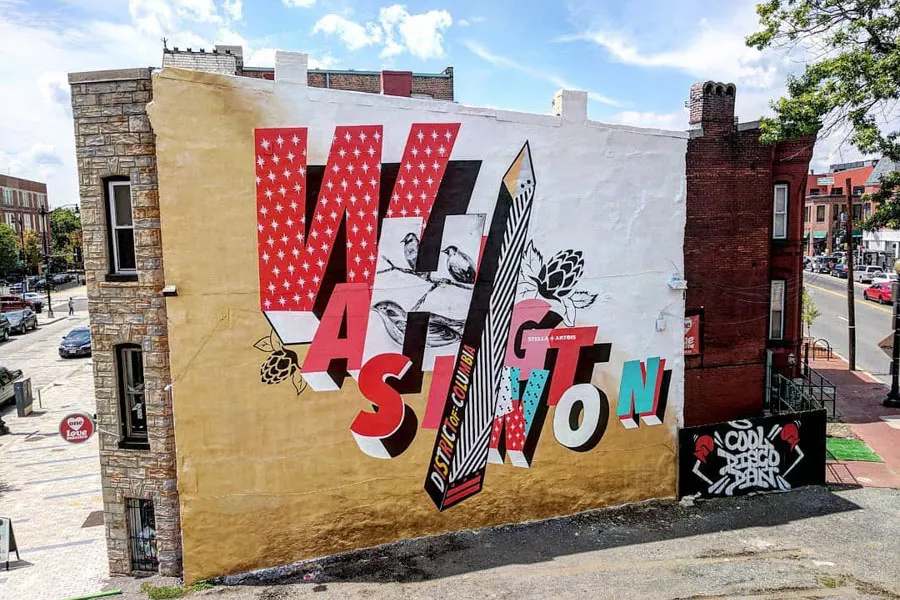
At Dacha Beer Garden, the Elizabeth Taylor mural is a “mythology” of glamour and philanthropy. The image of the 20th-century film star, whose AIDS awareness charity work is recognized by the nearby Whitman-Walker Health, is a symbol of Shaw, where fun and compassion coexist.
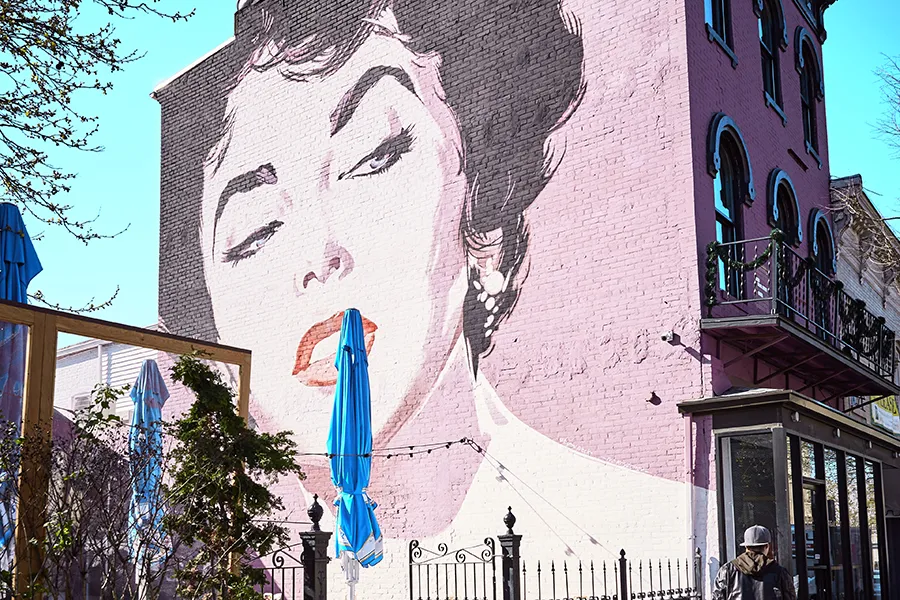
Southwest Waterfront: Myths of Cultural Transformation
Southwest Waterfront, an area undergoing a strong transformation, tells mythological stories of cultural rebirth. Culture House DC, an old Baptist church converted into an arts and culture center, is a “mythology” of innovation and creativity. The Victorian and Romanesque architecture of the building, “reimagined” by artist HENSE with contemporary art style, is a symbol of Southwest Waterfront, where past and future meet.
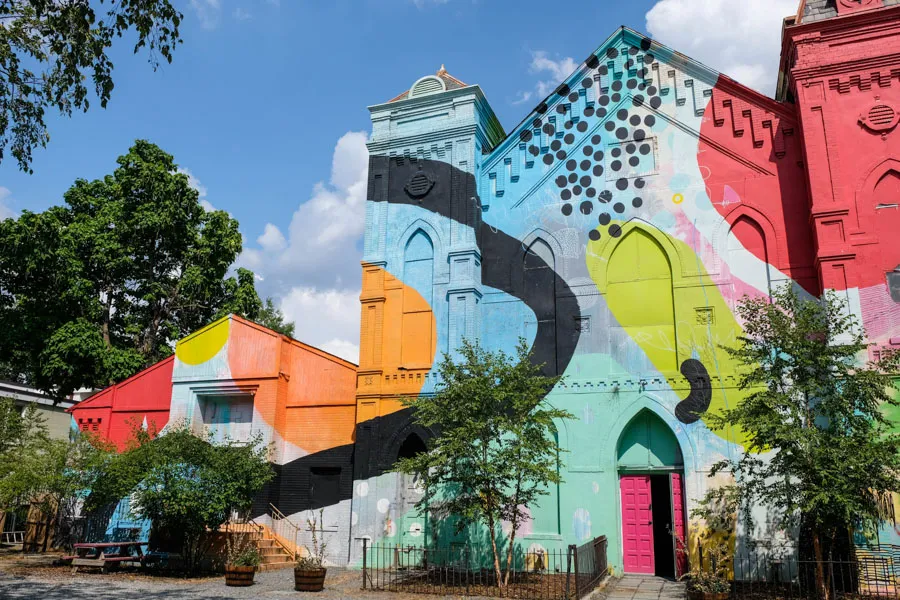
U Street: Myths of Legendary Food and Music
U Street, a vibrant historical and cultural neighborhood, tells mythological stories of legendary food and music. Ben’s Chili Bowl, an iconic DC eatery since 1958, is a culinary “mythology,” famous for its signature half-smoke. The giant mural on the wall of the restaurant, featuring images of iconic African American figures such as Dave Chappelle, Harriet Tubman, and Barack and Michelle Obama, is a “mythology” of culture and history, an integral part of U Street.
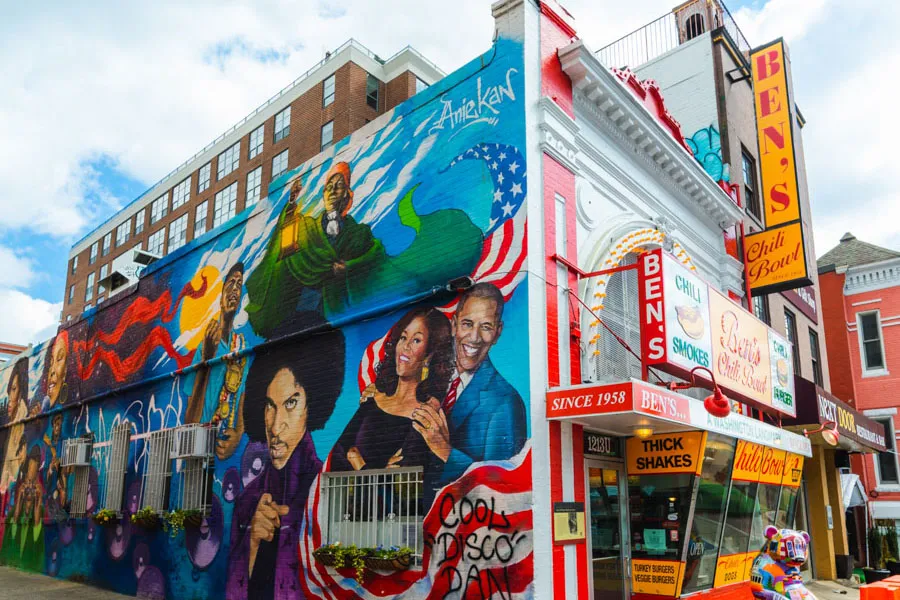
Nearby, the “Resurrection” mural on U Street by Aniekan Udofia is a musical “mythology,” honoring music legends Miles Davis, Duke Ellington, John Coltrane, and Billie Holiday. This monumental work is a symbol of U Street, a neighborhood associated with jazz history and African American culture.
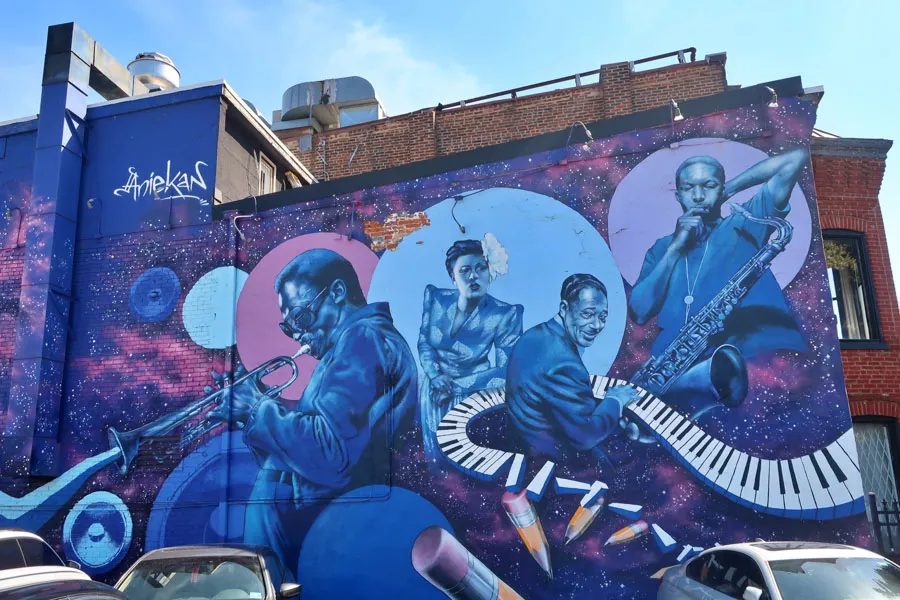
“Lee’s Legacy Mural” on U Street tells a “mythology” of local business and cultural heritage. Lee’s Flower and Card Shop, open since 1945, is an icon of U Street, alongside Ben’s Chili Bowl. This mural is a tribute to Lee’s legacy and the community of Black-owned businesses along the U Street Corridor.
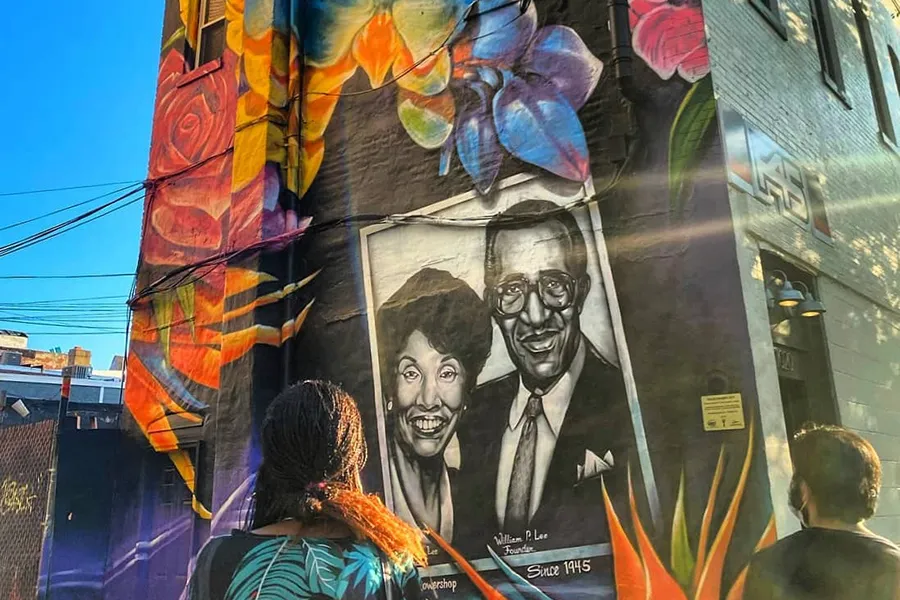
Foggy Bottom: Myths of Music and Industry
Foggy Bottom, a historic and intellectual area, tells mythological stories of music and industry. The Duke Ellington mural, also by Aniekan Udofia, is a musical “mythology,” honoring the jazz legend born in Foggy Bottom. This work, located outside the building where Duke Ellington was born, is a symbol of Foggy Bottom, a neighborhood associated with music and culture.
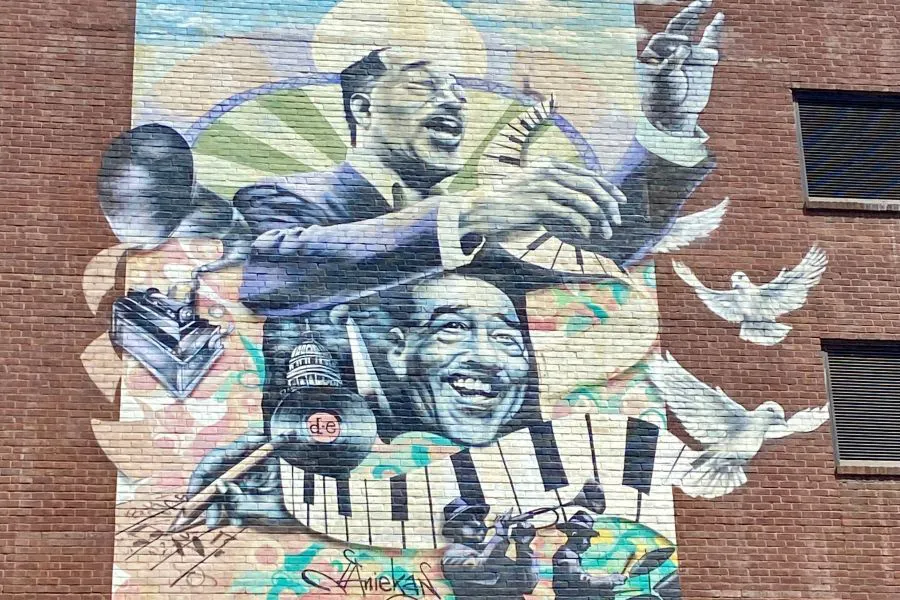
Another “Foggy Bottom” mural by Aniekan Udofia tells a “mythology” of the area’s industrial past and educational spirit. Images of glassblowers, factory smoke, and symbols related to George Washington University are a unique combination, reflecting the Foggy Bottom “mythology,” where industrial history and intellectual development meet.
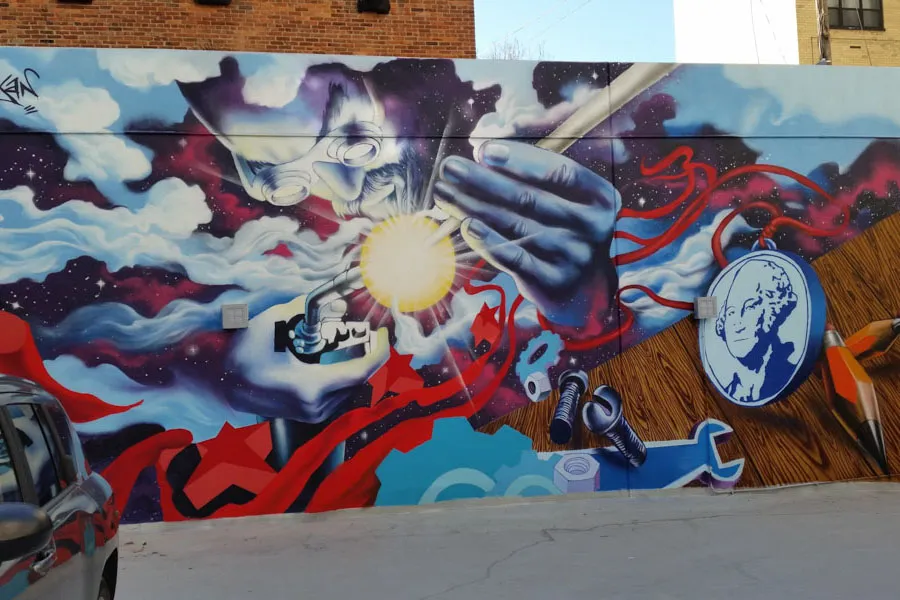
The “Garden” mural by Elizabeth Graber brings a “mythology” of nature and creativity. This work, painted on the rear facade of a historic block, is an artistic “garden,” part of the Foggy Bottom “mythology,” where natural beauty and artistic creativity blend together.

Finally, the “Patriotic Meadow” mural by Daniel Zeltner tells a “mythology” of humor and patriotism. Images of cows, puddles of milk, and the Capitol Building are a quirky and interesting combination, a Foggy Bottom “mythology,” where seriousness and humor coexist.
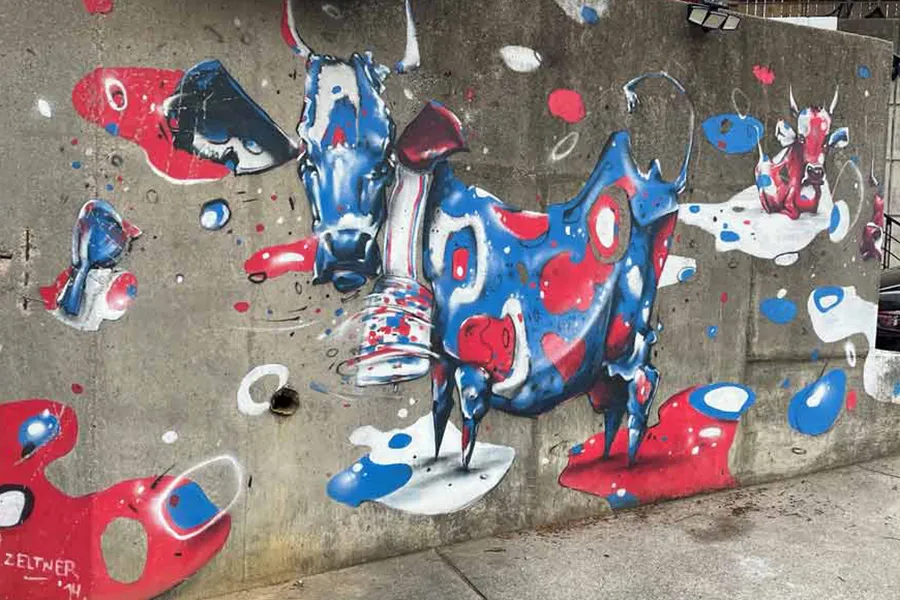
The murals in Washington D.C. are not just mere street artworks, but also contemporary mythological stories, reflecting the cultural identity, history, and spirit of the city and its people. Each mural is a story, each neighborhood is a chapter in the Washington D.C. “mythology” book. Come and discover these “mythologies” to deeply feel the beauty and diversity of the US capital.